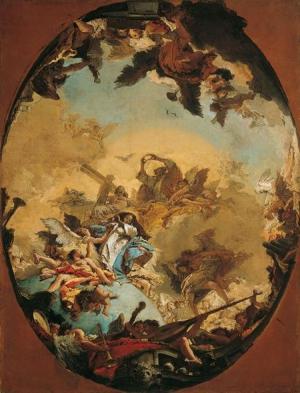Instruments of Reduction
Nonfiction, Religion & Spirituality, New Age, History, Fiction & Literature| Author: | Hippocrates | ISBN: | 9781465528124 |
| Publisher: | Library of Alexandria | Publication: | March 8, 2015 |
| Imprint: | Language: | English |
| Author: | Hippocrates |
| ISBN: | 9781465528124 |
| Publisher: | Library of Alexandria |
| Publication: | March 8, 2015 |
| Imprint: | |
| Language: | English |
With regard to The construction of bones, The bones and joints of The fingers are simple, The bones of The hand and foot are numerous, and articulated in various ways; The uppermost are The largest; The heel consists of one bone which is seen to project outward, and The back tendons are attached to it. The leg consists of two bones, united togeTher above and below, but slightly separated in The middle; The external bone (fibula), where it comes into proximity with The little toe, is but slightly smaller than The Other, more so where They are separated, and at The knee, The outer hamstring arises from it; These bones have a common epiphysis below, with which The foot is moved, and another epiphys is above, in which is moved The articular extremity of The femur, which is simple and light in proportion to its length, in The form of a condyle, and having The patella (connected with it?), The femur itself bends outward and forward; its head is a round epiphysis which gives origin to ligament inserted in The acetabulum of The hip-joint. This bone is articulated somewhat obliquely, but less so than The humerus. The ischium is united to The great vertebra contiguous to The os sacrum by a cartilaginous ligament. The spine, from The os sacrum to The great vertebra, is curved backward; in this quarter are situated The bladder, The organs of generation, and The inclined portion of The rectum; from this to The diaphragm it proceeds in a straight line inclining forward, and The psoae are situated There; from this point, to The great vertebra above The tops of The shoulders, it rises in a line that is curved backward, and The curvature appears greater than it is in reality, for The posterior processes of The spine are There highest; The articulation of The neck inclines forward. The vertebrae on The inside are regularly placed upon one another, but behind They are connected by a cartilaginous ligament; They are articulated in The form of synarthrosis at The back part of The spinal marrow; behind They have a sharp process having a cartilaginous epiphysis, whence proceeds The roots of nerves running downward, as also muscles extending from The neck to The loins, and filling The space between The ribs and The spine. The ribs are connected to all The intervertebral spaces on The inside, from The neck to The lumbar region, by a small ligament, and before to The sternum, Their extremities being spongy and soft; Their form is The most arched in man of all animals; for in this part, man is, of all animals, The narrowest in proportion to his bulk. The ribs are united to each vertebra by a small ligament at The place from which The short and broad lateral processes (transverse processes?) arise. The sternum is one continuous bone, having lateral pits for The insertion of The ribs; it is of a spongy and cartilaginous structure.
With regard to The construction of bones, The bones and joints of The fingers are simple, The bones of The hand and foot are numerous, and articulated in various ways; The uppermost are The largest; The heel consists of one bone which is seen to project outward, and The back tendons are attached to it. The leg consists of two bones, united togeTher above and below, but slightly separated in The middle; The external bone (fibula), where it comes into proximity with The little toe, is but slightly smaller than The Other, more so where They are separated, and at The knee, The outer hamstring arises from it; These bones have a common epiphysis below, with which The foot is moved, and another epiphys is above, in which is moved The articular extremity of The femur, which is simple and light in proportion to its length, in The form of a condyle, and having The patella (connected with it?), The femur itself bends outward and forward; its head is a round epiphysis which gives origin to ligament inserted in The acetabulum of The hip-joint. This bone is articulated somewhat obliquely, but less so than The humerus. The ischium is united to The great vertebra contiguous to The os sacrum by a cartilaginous ligament. The spine, from The os sacrum to The great vertebra, is curved backward; in this quarter are situated The bladder, The organs of generation, and The inclined portion of The rectum; from this to The diaphragm it proceeds in a straight line inclining forward, and The psoae are situated There; from this point, to The great vertebra above The tops of The shoulders, it rises in a line that is curved backward, and The curvature appears greater than it is in reality, for The posterior processes of The spine are There highest; The articulation of The neck inclines forward. The vertebrae on The inside are regularly placed upon one another, but behind They are connected by a cartilaginous ligament; They are articulated in The form of synarthrosis at The back part of The spinal marrow; behind They have a sharp process having a cartilaginous epiphysis, whence proceeds The roots of nerves running downward, as also muscles extending from The neck to The loins, and filling The space between The ribs and The spine. The ribs are connected to all The intervertebral spaces on The inside, from The neck to The lumbar region, by a small ligament, and before to The sternum, Their extremities being spongy and soft; Their form is The most arched in man of all animals; for in this part, man is, of all animals, The narrowest in proportion to his bulk. The ribs are united to each vertebra by a small ligament at The place from which The short and broad lateral processes (transverse processes?) arise. The sternum is one continuous bone, having lateral pits for The insertion of The ribs; it is of a spongy and cartilaginous structure.















